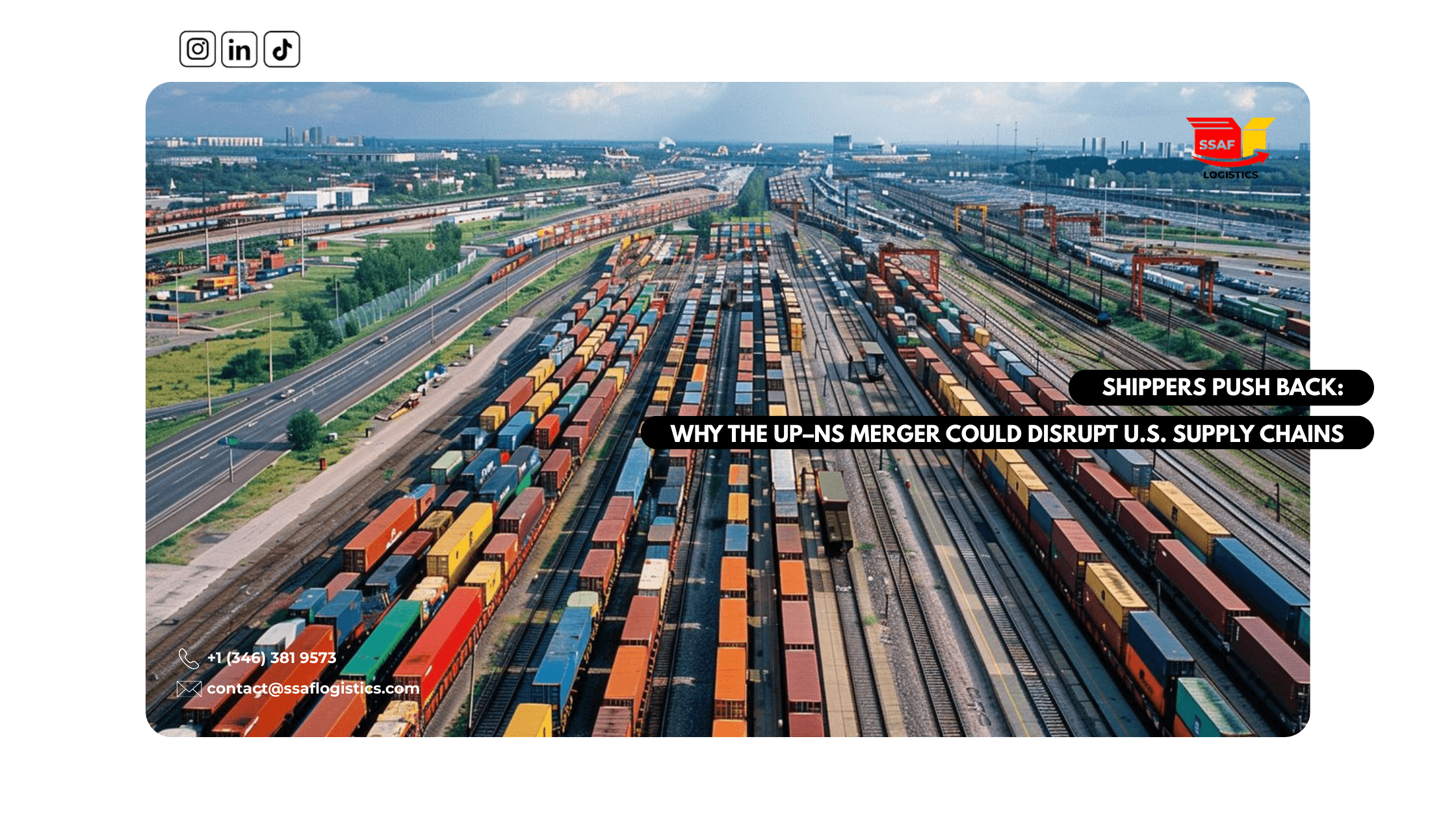Land Freight • 18 Sep, 2025 • 4 min read
Shippers Push Back: Why the UP–NS Merger Could Disrupt U.S. Supply Chains

By Andrea Davila
A coalition of shippers including firms in manufacturing, agriculture, and energy is warning people in the industry about the proposed merger between Union Pacific (UP) and Norfolk Southern (NS). Their message to federal regulators is stark: this merger could lead to worse service, higher prices, and less competition for everyone in the supply chain.
What’s going on
Union Pacific is proposing to acquire Norfolk Southern in a transaction valued at about US$85 billion. If the deal goes through, the combined railroad would stretch across 43 states, creating the first U.S. railroad network with continuous, single-line service from the Atlantic to the Pacific coasts.
The merger must be approved by the Surface Transportation Board (STB), which will assess whether it enhances competition, maintains fair rates, preserves service quality, upholds safety, and serves the public interest. Shippers are urging the regulators either to block the deal completely or impose strict conditions.
Key Concerns Raised by Shippers
Higher Costs for Shippers & Industries
Shippers warn that combining two of the rail industry’s giants could give the merged entity too much pricing power. This could translate to steeper rates for customers throughout the value chain.
Worsened Service Quality
Delays, reduced routing flexibility, and harm to service reliability are major worries. The fear is that the merged system could cut corners or deprioritize certain markets or routes.
Reduced Competition
By consolidating two major carriers, the merger could decrease the number of viable rail alternatives for customers. Reduced competition often correlates with higher prices, fewer choices, and less incentive to innovate or improve service.
Potential for Job Impacts & Safety Questions
Labor groups and others are worried about layoffs, changes in work practices, and whether safety standards might be compromised in the pursuit of operational efficiencies.
What’s Being Claimed in Favor of the Merger
Proponents argue that the merger could bring tangible benefits such as reduced transit times due to fewer interchange points, efficiency gains through economies of scale, and stronger competition with trucking. Supporters also believe a coast-to-coast rail system could help shift freight volume off roads, reduce highway congestion, and provide more streamlined service.
What This Means for SSAF & the Broader Logistics Landscape
Supply Chain Planning Complexity: If rates increase or service degrades, companies will need to build in buffer time, more contingency, and possibly shift to alternative transport modes where feasible.
Cost Forecasts Must Adjust: Logistics budgets, forecasts, and contracts may have underestimated the potential downstream effects of this merger.
Regulatory Influence is Key: The outcome will depend heavily on how regulatory bodies respond to the concerns raised. Conditions placed on the merger (if it is approved) might mitigate some risks but could also add complexity.
Opportunity for Disruption: If the merged railroad under-delivers, there could be openings for other railroads, trucking, intermodal players, or new technologies to step in and offer alternatives.
This isn’t just another corporate merger. If approved, the UP-NS deal could reshape U.S. freight rail networks in fundamental ways. The potential upside in efficiency and scale is real but so are the risks of diminished competition, higher costs, deteriorated service, and safety concerns. For logistics stakeholders, staying informed and engaged with how regulators assess this deal will be essential.
Related Blog Posts

![[object Object]](/_next/image?url=https%3A%2F%2Fcdn.sanity.io%2Fimages%2Fj6rggeis%2Fproduction%2Fc88c6865768ce5a986ba540371d808c688ae749f-2240x1260.png&w=3840&q=75)